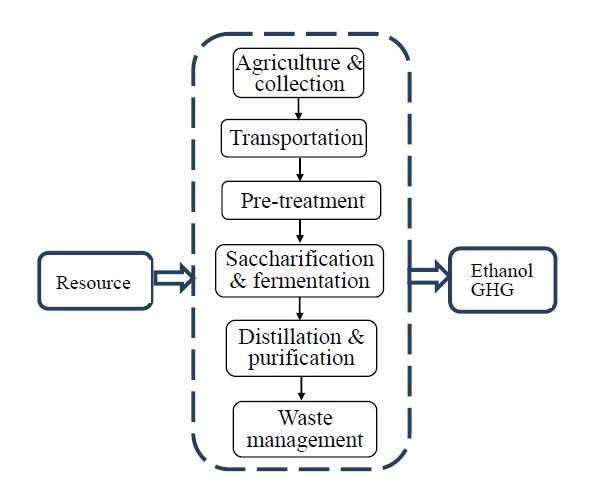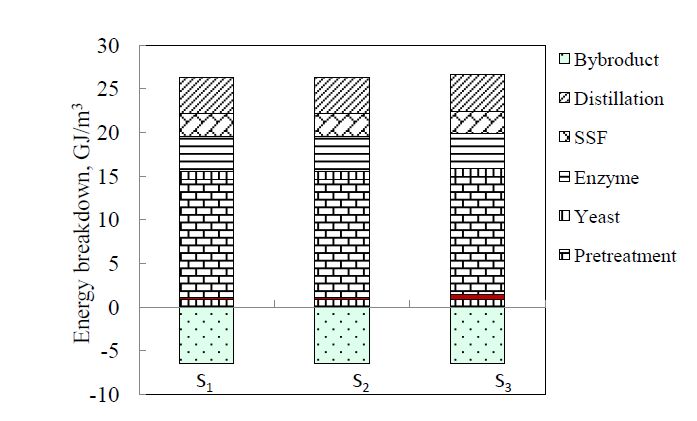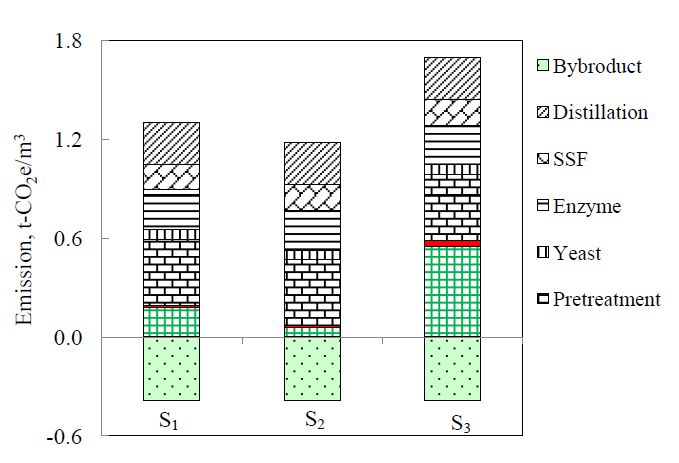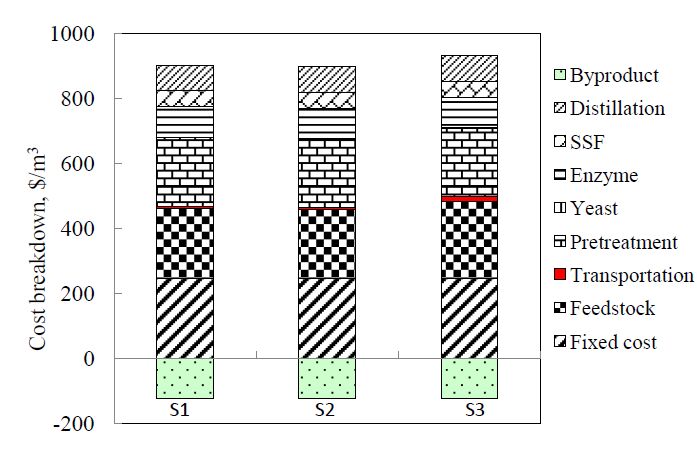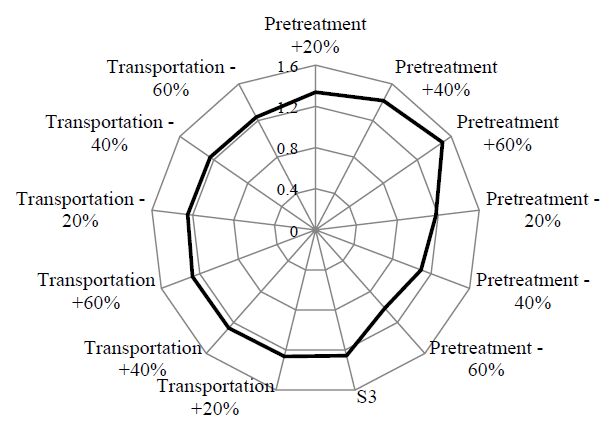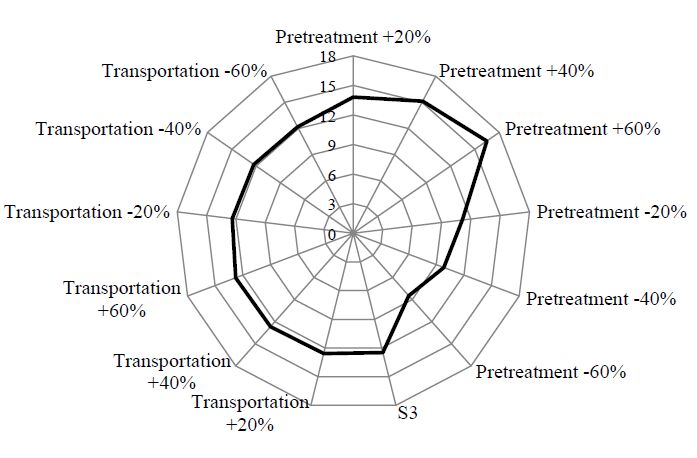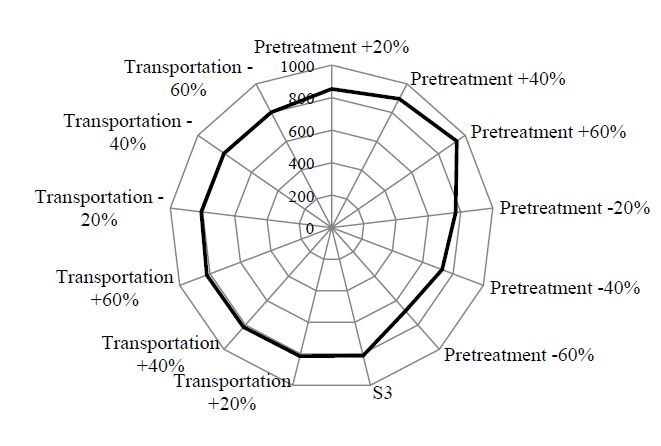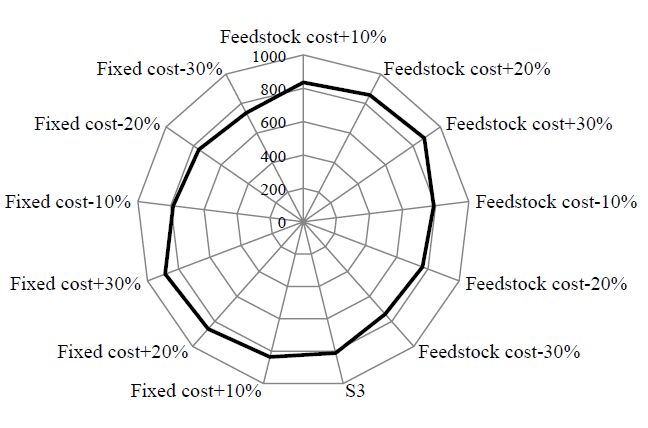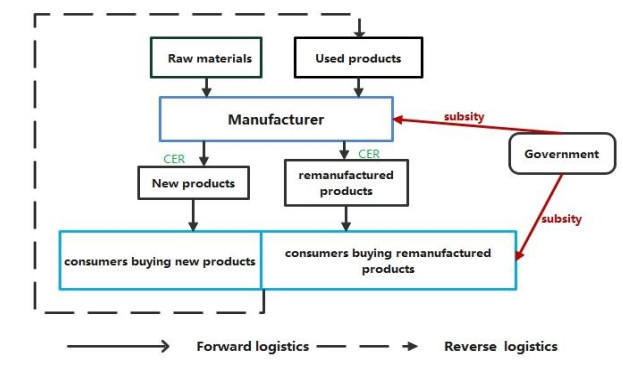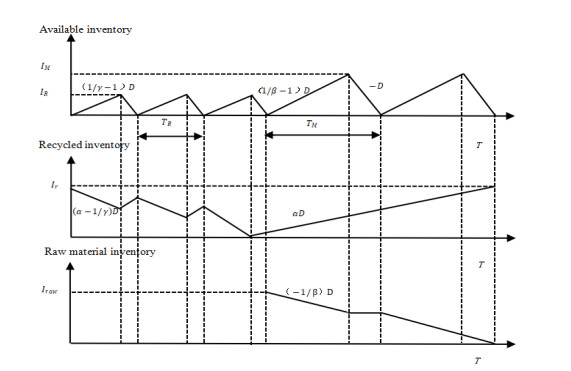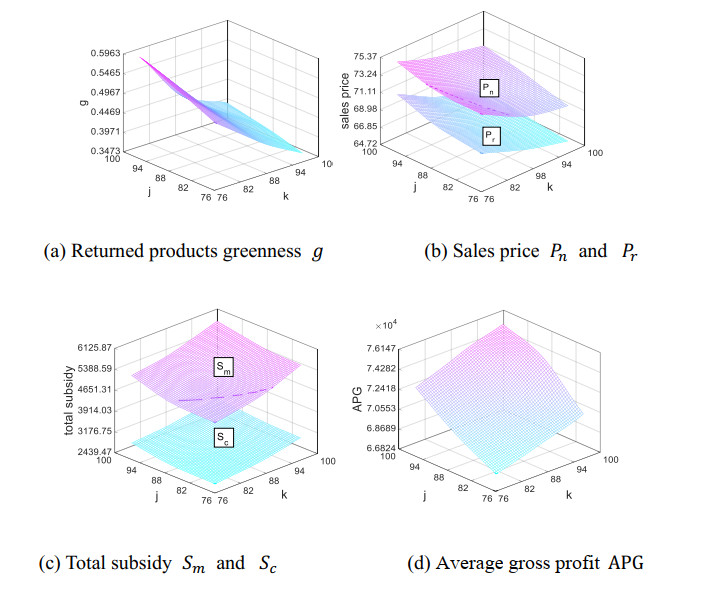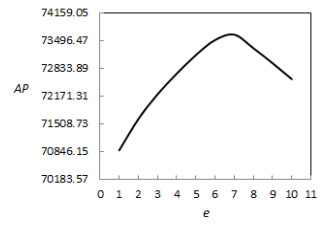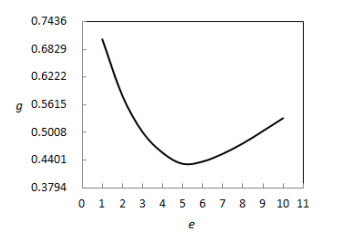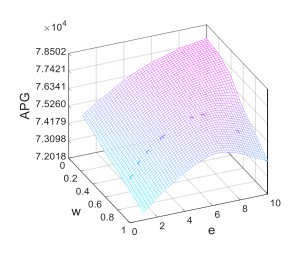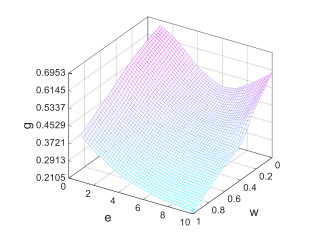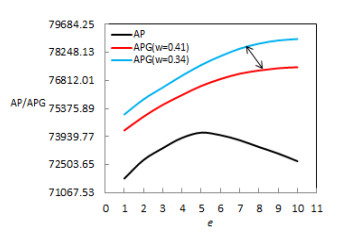|
[1]
|
M. S. Atabaki, M. Mohammadi, B. Naderi, New robust optimization models for closed-loop supply chain of durable products: Towards a circular economy, Comput. Ind. Eng., 146 (2020), 106520. https://doi.org/10.1016/j.cie.2020.106520 doi: 10.1016/j.cie.2020.106520

|
|
[2]
|
B. Khorshidvand, H. Soleimaniab, S. Sibdaric, M. M. S. Esfahanid, A hybrid modeling approach for green and sustainable closed-loop supply chain considering price, advertisement and uncertain demands, Comput. Ind. Eng., 157 (2021), 107326. https://doi.org/10.1016/j.cie.2021.107326 doi: 10.1016/j.cie.2021.107326

|
|
[3]
|
H. Liao, L. Li, Environmental sustainability EOQ model for closed-loop supply chain under market uncertainty: A case study of printer remanufacturing, Comput. Ind. Eng., 149 (2020), 106779. https://doi.org/10.1016/j.cie.2020.106525 doi: 10.1016/j.cie.2020.106525

|
|
[4]
|
R. Dominguez, B. Ponte, S. Cannella, J. M. Framinan, On the dynamics of closed-loop supply chains with capacity constraints, Comput. Ind. Eng., 128 (2019), 91-103. https://doi.org/10.1016/j.cie.2018.12.003 doi: 10.1016/j.cie.2018.12.003

|
|
[5]
|
H. Peng, N. Shen, H. Liao, H. Xue, Q. Wang, Uncertainty factors, methods, and solutions of closed-loop supply chain — A review for current situation and future prospects, J. Clean Prod., 254 (2020), 120032. https://doi.org/10.1016/j.jclepro.2020.120032 doi: 10.1016/j.jclepro.2020.120032

|
|
[6]
|
B. Zhu, B. Wen, S. Ji, R. Qiu, Coordinating a dual-channel supply chain with conditional value-at-risk under uncertainties of yield and demand, Comput. Ind. Eng., 139 (2020), 106181. https://doi.org/10.1016/j.cie.2019.106181 doi: 10.1016/j.cie.2019.106181

|
|
[7]
|
I. I. Almaraj, T. B. Trafalis, An integrated multi-echelon robust closed- loop supply chain under imperfect quality production, Int. J. Prod. Econ., 218 (2019), 212-227. https://doi.org/10.1016/j.ijpe.2019.04.035 doi: 10.1016/j.ijpe.2019.04.035

|
|
[8]
|
L. Wang, Q. Song, Pricing policies for dual-channel supply chain with green investment and sales effort under uncertain demand, Math Comput. Simul., 171 (2020), 79-93. https://doi.org/10.1016/j.matcom.2019.08.010 doi: 10.1016/j.matcom.2019.08.010

|
|
[9]
|
C. Li, L. Feng, S. Luo, Strategic introduction of an online recycling channel in the reverse supply chain with a random demand, J. Clean Prod., 236 (2019), 117683. https://doi.org/10.1016/j.jclepro.2019.117683 doi: 10.1016/j.jclepro.2019.117683

|
|
[10]
|
Y. Dai, L. Dou, H. Song, H. Y. Li, Two-way information sharing of uncertain demand forecasts in a dual-channel supply chain, Comput. Ind. Eng., 169 (2022), 108162. https://doi.org/10.1016/j.cie.2022.108162 doi: 10.1016/j.cie.2022.108162

|
|
[11]
|
X. Y. Zhu, Y. ZH. Cao, J. W. Wu, H. Liu, X. Q. Bei, Optimum operational schedule and accounts receivable financing in a production supply chain considering hierarchical industrial status and uncertain yield, Euro. J. Oper. Res., 302 (2022), 1142-1154. https://doi.org/10.1016/j.ejor.2022.02.008 doi: 10.1016/j.ejor.2022.02.008

|
|
[12]
|
L. J. Zeballos, M. I. Gomes, A. P. Barbosa-Povoa, A. Q. Novaisa, Addressing the uncertain quality and quantity of returns in closed-loop supply chains, Comput. Chem. Eng., 47 (2012), 237-247. https://doi.org/10.1016/j.compchemeng.2012.06.034 doi: 10.1016/j.compchemeng.2012.06.034

|
|
[13]
|
M. Jeihoonian, M. K. Zanjani, M. Gendreaub, Closed-loop supply chain network design under uncertain quality status: Case of durable products, Int. J. Prod. Econ., 183 (2017), Part B, 470-486. https://doi.org/10.1016/j.ijpe.2016.07.023
|
|
[14]
|
J. Heydari, M. Ghasemi, A revenue sharing contract for reverse supply chain coordination under stochastic quality of returned products and uncertain remanufacturing capacity, J. Clean Prod., 197 (2018), 607-615. https://doi.org/10.1016/j.jclepro.2018.06.206 doi: 10.1016/j.jclepro.2018.06.206

|
|
[15]
|
A. Aminipour, Z. Bahroun, M. Hariga, Cyclic manufacturing and remanufacturing in a closed-loop supply chain, Sustain Prod. Consump., 25 (2021), 43-59. https://doi.org/10.1016/j.spc.2020.08.002 doi: 10.1016/j.spc.2020.08.002

|
|
[16]
|
Z. Ghelichi, M. Saidi-Mehrabad, M. S. Pishvaee, A stochastic programming approach toward optimal design and planning of an integrated green biodiesel supply chain network under uncertainty: A case study, Energy, 156 (2018), 661-687. https://doi.org/10.1016/j.energy.2018.05.103 doi: 10.1016/j.energy.2018.05.103

|
|
[17]
|
M. Farrokh, A. Azar, G. Jandaghi, E. Ahmadi, A novel robust fuzzy stochastic programming for closed loop supply chain network design under hybrid uncertainty, Fuzzy Set. Syst., 341 (2018), 69-91. https://doi.org/10.1016/j.fss.2017.03.019 doi: 10.1016/j.fss.2017.03.019

|
|
[18]
|
S. Ahmadi, S. H. Amin, An integrated chance-constrained stochastic model for a mobile phone closed-loop supply chain network with supplier selection, J. Clean Prod., 226 (2019), 988-1003. https://doi.org/10.1016/j.jclepro.2019.04.132 doi: 10.1016/j.jclepro.2019.04.132

|
|
[19]
|
M. Josefa, P. David, P. Raul, The effectiveness of a fuzzy mathematical programming approach for supply chain production planning with fuzzy demand, Int. J. Prod. Econ., 128 (2010), 136-143. https://doi.org/10.1016/j.ijpe.2010.06.007 doi: 10.1016/j.ijpe.2010.06.007

|
|
[20]
|
C. Lima, S. Relvas, A. Barbosa-Póvoab, Designing and planning the downstream oil supply chain under uncertainty using a fuzzy programming approach, Comput. Chem. Eng., 151 (2021), 107373. https://doi.org/10.1016/j.compchemeng.2021.107373 doi: 10.1016/j.compchemeng.2021.107373

|
|
[21]
|
F. Ziya-Gorabi, A. Ghodratnama, R. Tavakkoli-Moghaddam, M. S. Asadi-Lari, A new fuzzy tri-objective model for a home health care problem with green ambulance routing and congestion under uncertainty, Expert Syst. Appl., 201 (2022), 117093. https://doi.org/10.1016/j.eswa.2022.117093 doi: 10.1016/j.eswa.2022.117093

|
|
[22]
|
J. Ghahremani-Nahr, R. Kian, E. Sabetd, A robust fuzzy mathematical programming model for the closed-loop supply chain network design and a whale optimization solution algorithm, Expert Syst. Appl., 116 (2019), 454-471. https://doi.org/10.1016/j.eswa.2018.09.027 doi: 10.1016/j.eswa.2018.09.027

|
|
[23]
|
H. Jafar, R. Pooya, Integration of environmental and social responsibilities in managing supply chains: A mathematical modeling approach, Comput. Ind. Eng., 145 (2020), 106495. https://doi.org/10.1016/j.cie.2020.106495 doi: 10.1016/j.cie.2020.106495

|
|
[24]
|
J. Q. Guo, H. L. Yu, M. Gen, Research on green closed-loop supply chain with the consideration of double subsidy in e-commerce environment, Comput. Ind. Eng., 149 (2020), 106779. https://doi.org/10.1016/j.cie.2020.106779 doi: 10.1016/j.cie.2020.106779

|
|
[25]
|
J. Jian, B. Lia, N. Zhang, J. F. Su, Decision-making and coordination of green closed-loop supply chain with fairness concern, J. Clean Prod., 298 (2021), 126779. https://doi.org/10.1016/j.jclepro.2021.126779 doi: 10.1016/j.jclepro.2021.126779

|
|
[26]
|
Y. Liu, L. Ma, Y. k. Liu, A novel robust fuzzy mean-UPM model for green closed-loop supply chain network design under distribution ambiguity, Appl. Math. Model., 92 (2021), 99-135. https://doi.org/10.1016/j.apm.2020.10.042 doi: 10.1016/j.apm.2020.10.042

|
|
[27]
|
27. T. Asghari, A. A. Taleizadeh, F. Jolai, M. SadeghMoshtagh, Cooperative game for coordination of a green closed-loop supply chain, J. Clean Prod., 363 (2022), 132371. https://doi.org/10.1016/j.jclepro.2022.132371 doi: 10.1016/j.jclepro.2022.132371

|
|
[28]
|
J. Heydari, P. Rafiei, Integration of environmental and social responsibilities in managing supply chains: A mathematical modeling approach, Comput. Ind. Eng., 145 (2020), 106495. https://doi.org/10.1016/j.cie.2020.106495 doi: 10.1016/j.cie.2020.106495

|
|
[29]
|
Z. Feng, T. Xiao, D. J. Robb, Environmentally responsible closed-loop supply chain models with outsourcing and authorization options, J. Clean Prod., 278 (2021), 123791. https://doi.org/10.1016/j.jclepro.2020.123791 doi: 10.1016/j.jclepro.2020.123791

|
|
[30]
|
B. Marchi, S. Zanoni, L. E. Zavanella, M. Y. Jaber, Green supply chain with learning in production and environmental investments, IFAC-Papers OnLine, 51 (2018), 1738-1743. https://doi.org/10.1016/j.ifacol.2018.08.205 doi: 10.1016/j.ifacol.2018.08.205

|
|
[31]
|
Y. S. Huang, C. C. Fang, Y. A. Lin, Inventory management in supply chains with consideration of Logistics, green investment and different carbon emissions policies, Comput. Ind. Eng., 139 (2020), 106207. https://doi.org/10.1016/j.cie.2019.106207 doi: 10.1016/j.cie.2019.106207

|
|
[32]
|
Z. Hong, X. Guo, Green product supply chain contracts considering environmental responsibilities, Omega, 83 (2019), 155-166. https://doi.org/10.1016/j.omega.2018.02.010 doi: 10.1016/j.omega.2018.02.010

|
|
[33]
|
J. Cheng, B. Li, B. Gong, M. Cheng, L. Xu, The optimal power structure of environmental protection responsibilities transfer in remanufacturing supply chain, J. Clean Prod., 153 (2017), 558-569. https://doi.org/10.1016/j.jclepro.2016.02.097 doi: 10.1016/j.jclepro.2016.02.097

|
|
[34]
|
X. Y. Han, T. Y. Cao, Study on corporate environmental responsibility measurement method of energy consumption and pollution discharge and its application in industrial parks, J. Clean Prod., 326 (2022), 129359. https://doi.org/10.1016/j.jclepro.2021.129359 doi: 10.1016/j.jclepro.2021.129359

|
|
[35]
|
D. Y. Yang, D. P. Song, C. F. Li, Environmental responsibility decisions of a supply chain under different channel leaderships, Environ. Technol. Inno., 26 (2022), 102212. https://doi.org/10.1016/j.eti.2021.102212 doi: 10.1016/j.eti.2021.102212

|
|
[36]
|
W. Wu, Q. Zhang, Z. Liang, Environmentally responsible closed-loop supply chain models for joint environmental responsibility investment, recycling and pricing decisions, J. Clean Prod., 259 (2020), 120776. https://doi.org/10.1016/j.jclepro.2020.120776 doi: 10.1016/j.jclepro.2020.120776

|
|
[37]
|
R. Yang, W. S. Tang, J. X. Zhang, Government subsidies for green technology development under uncertainty, Euro J. Oper. Res., 286 (2020), 726-739. https://doi.org/10.1016/j.eti.2021.102212 doi: 10.1016/j.eti.2021.102212

|
|
[38]
|
S. Zheng, L. H. Yu, The government's subsidy strategy of carbon-sink fishery based on evolutionary game, Energy, 254 (2022), Part B, 124282. https://doi.org/10.1016/j.energy.2022.124282
|
|
[39]
|
W. T. Chen, Z. H. Hu, Using evolutionary game theory to study governments and manufacturers' behavioral strategies under various carbon taxes and subsidies, J. Clean Prod., 201 (2018), 123-141. https://doi.org/10.1016/j.jclepro.2018.08.007 doi: 10.1016/j.jclepro.2018.08.007

|
|
[40]
|
M. C. Cohen, R. Lobel, G. Perakis, The impact of demand uncertainty on consumer subsidies for green technology adoption, Manage. Sci., 62 (2016), 1235-1258. https://doi.org/http://hdl.handle.net/1721.1/111095
|
|
[41]
|
J. S. Bian, G. Q. Zhang, G. H. Zhou, Manufacturer vs. Consumer Subsidy with Green Technology Investment and Environmental Concern, Euro J. Oper. Res., 287 (2020), 832-843. https://doi.org/10.1016/j.ejor.2020.05.014 doi: 10.1016/j.ejor.2020.05.014

|
|
[42]
|
Y. W. Deng, N. Li, Zh. B. Jiang, X. Q. Xie, N. Kong, Optimal differential subsidy policy design for a workload-imbalanced outpatient care network, Omega, 99 (2021), 102194. https://doi.org/10.1016/j.omega.2020.102194 doi: 10.1016/j.omega.2020.102194

|
|
[43]
|
W. Wang, S. J. Hao, W. He, M. AbdulkadirMohamed, Carbon emission reduction decisions in construction supply chain based on differential game with government subsidies, Build Environ., (2022), 109149. https://doi.org/10.1016/j.buildenv.2022.109149
|
|
[44]
|
S. Chen, J. F. Su, Y. B. Wu, F. L. Zhou, Optimal production and subsidy rate considering dynamic consumer green perception under different government subsidy orientations, Comput. Ind. Eng., 168 (2022), 108073. https://doi.org/10.1016/j.cie.2022.108073 doi: 10.1016/j.cie.2022.108073

|
|
[45]
|
A. Suliman, H. Otrok, R. Mizouni, A greedy-proof incentive-compatible mechanism for group recruitment in mobile crowd sensing, Future Gener. Comp. Syst., 101 (2019), 1158-1167. https://doi.org/10.1016/j.future.2019.07.060 doi: 10.1016/j.future.2019.07.060

|
|
[46]
|
I. E. Nielsen, S. Majumder, S. S. Sana, S. Saha, Comparative analysis of government incentives and game structures on single and two-period green supply chain, J. Clean Prod., 235 (2019), 1371-1398. https://doi.org/10.1016/j.jclepro.2019.06.168 doi: 10.1016/j.jclepro.2019.06.168

|
|
[47]
|
W. Wang, Y. Zhang, W. Zhang, Incentive mechanisms in a green supply chain under demand uncertainty, J. Clean Prod., 279 (2021), 123636. https://doi.org/10.1016/j.jclepro.2020.123636 doi: 10.1016/j.jclepro.2020.123636

|
|
[48]
|
Z. Qu, H. Raff, N. Schmitt, Incentives through inventory control in supply chains, Int. J. Ind. Org., 59 (2018), 486-513. https://doi.org/10.1016/j.ijindorg.2018.06.001 doi: 10.1016/j.ijindorg.2018.06.001

|
|
[49]
|
Z. Wang, Z. Wang, N. Tahir, Study of synergetic development in straw power supply chain: Straw price and government subsidy as incentive, Energy Policy, 146 (2020), 111788. https://doi.org/10.1016/j.enpol.2020.111788 doi: 10.1016/j.enpol.2020.111788

|
|
[50]
|
Y. H. Zhang, Y. Wang, The impact of government incentive on the two competing supply chains under the perspective of Corporation Social Responsibility: A case study of Photovoltaic industry, J. Clean Prod., 154 (2017), 102-113. https://doi.org/10.1016/j.jclepro.2017.03.127 doi: 10.1016/j.jclepro.2017.03.127

|
|
[51]
|
H. Y. Guo, N. C. Yannelis, Incentive compatibility under ambiguity, J. Econo. Theory., 73 (2022), 565-593. https://doi.org/10.1007/s00199-020-01304-x doi: 10.1007/s00199-020-01304-x

|
|
[52]
|
S. Barberà, D. Berga, B. Moreno, Restricted environments and incentive compatibility in interdependent values models, Game Econo. Behav., 131 (2022), 1-28. https://doi.org/10.1016/j.geb.2021.10.008 doi: 10.1016/j.geb.2021.10.008

|
|
[53]
|
Y. H. Feng, S. Deb, G. G. Wang, A. H. Alavi, Monarch butterfly optimization: A comprehensive review, Expert Syst. Appl., 168 (2021), 114418. https://doi.org/10.1016/j.eswa.2020.114418 doi: 10.1016/j.eswa.2020.114418

|
|
[54]
|
G. G. Wang, S. Deb, Z. H. Cui, Monarch butterfly optimization, Neural Comput. Appl., 31 (2019), 1995-2014. https://doi.org/10.1007/s00521-015-1923-y doi: 10.1007/s00521-015-1923-y

|
|
[55]
|
H. F. Rahman, M. N. Janardhanan, L. P. Chuen, S. G. Ponnambalam, Flowshop scheduling with sequence dependent setup times and batch delivery in supply chain, Comput. Ind. Eng., 158 (2021), 107378. https://doi.org/10.1016/j.cie.2021.107378 doi: 10.1016/j.cie.2021.107378

|
|
[56]
|
A. Chouar, S.Tetouani, A.Soulhi, J. Elalami, Performance improvement in physical internet supply chain network using hybrid framework, IFAC-Papers OnLine, 54 (2121), 593-598. https://doi.org/10.1016/j.ifacol.2021.10.514 doi: 10.1016/j.ifacol.2021.10.514

|
|
[57]
|
Y. T. Yang, H. L. Chen, A. A. Heidari, A. HGandom, Hunger games search: Visions, conception, implementation, deep analysis, perspectives, and towards performance shifts, Expert Syst. Appl., 177 (2021), 114864. https://doi.org/10.1016/j.eswa.2021.114864 doi: 10.1016/j.eswa.2021.114864

|
|
[58]
|
H. Nguyen, X. N. Bui, A novel hunger games search optimization-based artificial neural network for predicting ground vibration intensity induced by mine blasting, Nat. Resour. Res., 30 (2021), 3865-3880. https://doi.org/10.1007/s11053-021-09903-8 doi: 10.1007/s11053-021-09903-8

|
|
[59]
|
R. D. Ambrosio, S. D. Giovacchino, Nonlinear stability issues for stochastic Runge-Kutta methods, Sci. Num. Simul., 94 (2021), 105549. https://doi.org/10.1016/j.cnsns.2020.105549 doi: 10.1016/j.cnsns.2020.105549

|
|
[60]
|
B. B. Shi, HuaYe, L. Zheng, J. C. Lyu, C. Chen, A. A. Heidari, Z. Y. Hu, H. L. Chen, P. L. Wu, Evolutionary warning system for COVID-19 severity: Colony predation algorithm enhanced extreme learning machine, Comput. Biol. Med., 136 (2021), 104698. https://doi.org/10.1016/j.compbiomed.2021.104698 doi: 10.1016/j.compbiomed.2021.104698

|
|
[61]
|
A. S. Mashaleh, N. F. B. Ibrahim, M. A. Al-Betar, H. M. J. Mustafa, Q. M. Yaseenc, Detecting spam email with machine learning optimized with Harris Hawks optimizer (HHO) algorithm, Procedia Comput. Sci., 201 (2022), 659-664. https://doi.org/10.1016/j.procs.2022.03.087 doi: 10.1016/j.procs.2022.03.087

|
|
[62]
|
M. Gen, R.W. Cheng, L. Lin, "Network Models and Optimization: Multiple Objective Genetic Algorithm Approach", 710pp, Springer, London, (2008).
|
|
[63]
|
X. X. Liu, J. Q. Guo, C. J. Liang, Joint Design model of multi-period reverse logistics network with the consideration of carbon emissions for e-commerce enterprises, Proceed. ICEBE2015, (2015), 428-433. https://doi.org/10.1109/ICEBE.2015.78
|
|
[64]
|
N. Sahebjamnia, A. M. Fathollahi-Fard, M. Hajiaghaei-Keshteli, Sustainable tire closed-loop supply chain network design: Hybrid meta-heuristic algorithms for large-scale networks, J. Clean Prod., 196 (2018), 273-296. https://doi.org/10.1016/j.jclepro.2018.05.245 doi: 10.1016/j.jclepro.2018.05.245

|
|
[65]
|
J. Y. Feng, B. Y. Yuan, X. Li, D. Tian, W. S. Mu, Evaluation on risks of sustainable supply chain based on optimized BP neural networks in fresh grape industry, Agriculture, 183 (2021), 105988. https://doi.org/10.1016/j.compag.2021.105988 doi: 10.1016/j.compag.2021.105988

|
|
[66]
|
S. X. Zhao, Y. C. Wang, Z. Y. Jiang, T. S. Hu, F. M. Chu, Research on emergency distribution optimization of mobile power for electric vehicle in photovoltaic-energy storage-charging supply chain under the energy blockchain, Energy Rep., 8 (2022), 6815-6825. https://doi.org/10.1016/j.egyr.2022.05.010 doi: 10.1016/j.egyr.2022.05.010

|
|
[67]
|
X. Y. Wang, J. Q. Guo, Optimal strategies of different quality level of returned Products for manufacturing/remanufacturing enterprises under carbon tax, Resour. Develop. mkt., 33 (2017), 59-63. https://doi.org/10.3969/j.issn.1005-8141.2017.01.011 doi: 10.3969/j.issn.1005-8141.2017.01.011

|
|
[68]
|
J. Q. Guo, L. He, M. Gen, Optimal strategies for the closed-loop supply chain with the consideration of supply disruption and subsidy policy, Comput. Ind. Eng., 128 (2019), 886-893. https://doi.org/10.1016/j.cie.2018.10.029 doi: 10.1016/j.cie.2018.10.029

|
|
[69]
|
N. Wan, D. Hong, The impacts of subsidy policies and transfer pricing policies on the closed-loop supply chain with dual collection channels, J. Clean Prod., 224 (2019), 881-891. https://doi.org/10.1016/j.jclepro.2019.03.274 doi: 10.1016/j.jclepro.2019.03.274

|
|
[70]
|
J. Q. Guo, Y. Gao, Optimal strategies for manufacturing/remanufacturing system with the consideration of recycled products, Comput. Ind. Eng., 89 (2015), 226-234. https://doi.org/10.1016/j.cie.2014.11.020 doi: 10.1016/j.cie.2014.11.020

|
|
[71]
|
Y. Yu, X. Han, G. Hu, Optimal production for manufacturers considering consumer environmental awareness and green subsidies, Int. J. Prod. Econ., 182 (2016), 397-408. https://doi.org/10.1016/j.cie.2022.108073 doi: 10.1016/j.cie.2022.108073

|
|
[72]
|
X. Gu, L. Zhou, H. Huang, X. Shi, Electric vehicle battery secondary use under government subsidy: A closed-loop supply chain perspective, Int. J. Prod. Econ., 234 (2021), 108035. https://doi.org/10.1016/j.ijpe.2021.108035 doi: 10.1016/j.ijpe.2021.108035

|
|
[73]
|
N. Wang, Y. Song, Q. He, T. Jia, Competitive dual-collecting regarding consumer behavior and coordination in closed-loop supply chain, Comput. Ind. Eng., 144 (2020), 106481. https://doi.org/10.1016/j.cie.2020.106481 doi: 10.1016/j.cie.2020.106481

|
|
[74]
|
S. M. Hosseini-Motlagh, M. Johari, S. Ebrahimi, P. Rogetzer, Competitive channels coordination in a closed-loop supply chain based on energy-saving effort and cost-tariff contract, Comput. Ind. Eng., 149 (2020), 106763. https://doi.org/10.1016/j.cie.2020.106763 doi: 10.1016/j.cie.2020.106763

|
|
[75]
|
J. Q. Guo, Y. D. Kao, H. Huang, A manufacturing/remanufacturing system with the consideration of required quality of end-of-used products, Indus. Eng. Mgt. Syst., 9 (2010), 204-214. https://doi.org/10.7232/iems.2010.9.3.204 doi: 10.7232/iems.2010.9.3.204

|
|
[76]
|
Y. Wu, R. Lu, J. Yang, R. Wang, H. Xu, C. Jiang, F. Xu, Government-led low carbon incentive model of the online shopping supply chain considering the O2O model, J. Clean Prod., 279 (2021), 123271. https://doi.org/10.1016/j.jclepro.2020.123271 doi: 10.1016/j.jclepro.2020.123271

|
|
[77]
|
X. Wan, X. Qie, Poverty alleviation ecosystem evolutionary game on smart supply chain platform under the government financial platform incentive mechanism, J. Comput. Appl. Math., 372 (2020), 112595. https://doi.org/10.1016/j.cam.2019.112595 doi: 10.1016/j.cam.2019.112595

|
|
[78]
|
J. Bian, G. Zhang, G. Zhou, Manufacturer vs. Consumer subsidy with green technology investment and environmental concern, Euro. J. Oper. Res., 287 (2020), 832-843. https://doi.org/10.1016/j.ejor.2020.05.014 doi: 10.1016/j.ejor.2020.05.014

|
|
[79]
|
W. Wu, Q. Zhang, Z. Liang, Environmentally responsible closed-loop supply chain models for joint environmental responsibility investment, recycling and pricing decisions, J. Clean Prod., 259 (2020), 120776. https://doi.org/10.1016/j.jclepro.2020.120776 doi: 10.1016/j.jclepro.2020.120776

|
|
[80]
|
S. Nayeri, M. M. Paydar, E. Asadi-Gangraj, S. Emami, Multi-objective fuzzy robust optimization approach to sustainable closed-loop supply chain network design, Comput. Ind. Eng., 148 (2020), 106716. https://doi.org/10.1016/j.cie.2020.106716 doi: 10.1016/j.cie.2020.106716

|
|
[81]
|
K. Bhattacharya, S. D. Kumar, A robust two layer green supply chain modelling under performance based fuzzy game theoretic approach, Comput. Ind. Eng., 152 (2021), 107005. https://doi.org/10.1016/j.cie.2020.107005 doi: 10.1016/j.cie.2020.107005

|
|
[82]
|
M. Yavari, S. Isvandi, Integrated decision making for parts ordering and scheduling of jobs on two-stage assembly problem in three level supply chain, J. Manuf. Syst., 46 (2018), 137-151. https://doi.org/10.1016/j.jmsy.2017.12.002 doi: 10.1016/j.jmsy.2017.12.002

|
|
[83]
|
J. Wu, Y. Ding, L. Shi, Mathematical modeling and heuristic approaches for a multi-stage car sequencing problem, Comput. Ind. Eng., 152 (2021), 107008. https://doi.org/10.1016/j.cie.2020.107008 doi: 10.1016/j.cie.2020.107008

|
|
[84]
|
M. Hamdi, M. Zaied, Resource allocation based on hybrid genetic algorithm and particle swarm optimization for D2D multicast communications, Appl. Soft Comput., 83 (2019), 105605. https://doi.org/10.1016/j.asoc.2019.105605 doi: 10.1016/j.asoc.2019.105605

|
|
[85]
|
A. Afzal, M., K. Ramis, Multi-objective optimization of thermal performance in battery system using genetic and particle swarm algorithm combined with fuzzy logics, J. Energy Stor., 32 (2020), 101815. https://doi.org/10.1016/j.est.2020.101815 doi: 10.1016/j.est.2020.101815

|
|
[86]
|
M. Gen, L. Lin, Y.S. Yun, H. Inoue, Recent advances in hybrid priority-based genetic algorithms for logistics and SCM network design, Comput. Ind. Eng., 115 (2018), 394-412. https://doi.org/10.1016/j.cie.2018.08.025 doi: 10.1016/j.cie.2018.08.025

|
|
[87]
|
G. Ahn, S. Hur, Efficient genetic algorithm for feature selection for early time series classification, Comput. Ind. Eng., 142 (2020), 106345. https://doi.org/10.1016/j.cie.2020.106345 doi: 10.1016/j.cie.2020.106345

|
|
[88]
|
A. Rostami, M. M. Paydar, E. Asadi-Gangraj, A hybrid genetic algorithm for integrating virtual cellular manufacturing with supply chain management considering new product development, Comput. Ind. Eng., 145 (2020), 106565. https://doi.org/10.1016/j.cie.2020.106565 doi: 10.1016/j.cie.2020.106565

|









 DownLoad:
DownLoad: 